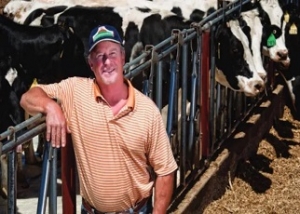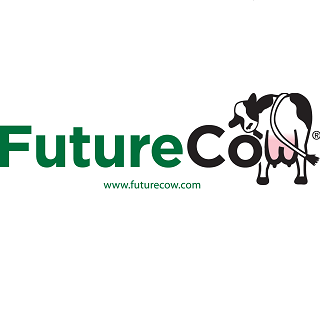Dairy in the World
How much is mastitis costing your dairy farm?

Mastitis is estimated to cost the global dairy industry $19.7B–32B (USD) annually [1], and the cost of subclinical mastitis in the US alone is expected to exceed $1B (USD) annually [2]. What are the losses due to mastitis, and what is mastitis really costing your dairy?
Clinical Mastitis on the Farm
Reduced Milk Yield = Reduced Profit
Mastitis reduces the milk yield of individual infected cows and the profit potential of the entire dairy operation. A study published in 2015 showed the cost per case of clinical mastitis in the first 30 days of lactation is $444 [3].
Breakdown of costs for clinical mastitis:
-
Milk production loss: 31%
-
Veterinary fees and drug costs: 24%
-
Loss due to discarded milk: 18%
-
Cost due to excess labor demand: 4%
-
Loss due to premature culling: 23%
Let's take a closer look at each of these costs and consider the implications for your dairy:
Production losses
Reduced milk production is the highest cost linked to a mastitis case. However, the amount of loss depends on several factors. For example, a first-lactation cow with mastitis will have an average milk yield loss of 0–9%,[4] while second- or later-lactation cows can experience higher yield losses. Milk production losses can also vary by breed, herd size, and region.
Veterinary treatment
Veterinarians should be consulted when mastitis flares up in a herd and/or in severe cases to assist in identifying the pathogen or pathogens that are causing the outbreak. Different categories of pathogens require different management strategies. Without a diagnosis, there is no way to know if a given antibiotic will be effective. However, once you've identified the infectious agent, a dairy farmer can work with his or her veterinarian to initiate an effective treatment plan.
Discarded milk
Discarded milk is another key loss for dairies that is sometimes overlooked. It's important to keep records and continuously monitor this cost. Remember, a cow isn't profitable unless she's producing saleable milk. Discarded milk costs are easy to calculate:
Cost of discarded milk = days of treatment time + days of milk withdrawal period x average cow milk yield
Excess labor
While the cost of additional labor may seem minimal, it can create a real challenge on the farm, especially when labor is in short supply. Labor costs include the extra time needed to separate cows from the herd, milk them separately, ensure that milk is discarded, administer treatment, and monitor health. Plus, there's additional work associated with severe cases, like frequently stripping out the teats and more intensive nursing and monitoring.
Premature culling
Decisions to cull are sometimes based on the intuition of the decision maker. However, culling cows has a huge impact on the economic performance of a dairy. The cost of culling is easy to calculate, but many factors should be considered: whether this is her first case of mastitis or repeated occurrence, the severity of her mastitis case, her annual milk production, her age, and the availability and cost of replacement heifers.
Premature culling cost = sale cost – replacement value
Subclinical Mastitis on the Farm
Subclinical Infections Steal Profits
High somatic cell count (SCC) is a key indicator of a dairy herd with subclinical mastitis. Subclinical mastitis may be the most economically important challenge for a herd to rectify due to the cost and impact of long-term, chronic infection on a herd's annual milk yield. Acknowledging that subclinical infections are stealing profits from your dairy is the first step to begin managing the disease.
Consider the implications for your dairy:
Reduced milk price
Milk processors do not want milk with a high SCC because it reduces both the shelf life of dairy products and quality and quantity of milk protein in cheese. Many milk processors will pay premiums for higher quality milk. Thus, efforts to manage subclinical mastitis and produce milk with a lower SCC represents a potential profit opportunity through increased milk premiums.
Milk yield reduction
An underlying infection will reduce overall milk yield potential and can damage milk secreting cells and tissues. Milk yield drops 2.5% for every 100,000-cell increase in the SCC above a base figure of 200,000 [5]. Another study showed that for every 100,000 cells/mL increase in the bulk tank SCC, milk yield declines 5.5 pounds [6]. Chronic cases of mastitis can result in lower yield and poorer milk quality even after a pathogen has cleared the cow's system.
Elevated culling
Lower milk–producing cows with high SCCs are often culled. If high cow turnover is an issue, this can result in milking a higher percentage of younger cows with less production and fewer pounds of milk.
Testing and Herd Surveillance
Since mastitis can cause significant economic losses every year, farmers should monitor SCC regularly, and the milking team should check a cow's milk and udders during their milking routine. Fast, accurate diagnostic results are needed to identify the mastitis-causing pathogen(s), so the farmer and veterinarian can quickly develop an action plan on duration of treatments, and to minimize loss of milk and spread of disease to rest of the herd.
Once mastitis has been identified in a cow's quarter(s), it is important to test the milk because different categories of pathogens require different management strategies. Several diagnostic testing options are available. It's best to consider the needs of your dairy farm, then work with your herd veterinarian to develop a mastitis control program that fits your specific operation.
Bacterial culture has traditionally been used in many parts of the world for the diagnosis of mastitis infections. However, culturing can take up to 10 days, and some pathogens can be difficult to grow and can produce false-negative results.
PCR, due to its specificity and sensitivity, provides clear and objective results. This allows veterinarians and farmers to make informed decisions to create targeted treatments that can minimize the use of antibiotics. Prudent use of antibiotics can reduce the duration of treatment, labor, antibiotic cost, and the likelihood of pathogen resistance, all of which can help minimize the economic impact of mastitis on your dairy.
Learn More
Bovine Mastitis Diagnosis Has Never Been This Fast and Easy
Diagnostic Solutions for Dairy Cattle
Questions? Contact a dairy specialist.
References
1 "Potential Biomarkers of Mastitis in Dairy Cattle Milk Identified". Phys.Org, 2022, https://phys.org/news/2016-07-potential-biomarkers-mastitis-dairy-cattle.html.
2 Ott S (1999) Costs of herd-level production losses associated with subclinical mastitis in US Dairy Cows. 1999. PP 152-156 in Proceedings of the 38th annual meeting of National Mastitis Council, Arlington VA. Natl. Mast Coun. Madison WI.
3 Rollin, E. et al. "The Cost of Clinical Mastitis in The First 30 Days of Lactation: An Economic Modeling Tool". Preventive Veterinary Medicine, vol 122, no. 3, 2015, pp. 257-264. Elsevier BV, doi:10.1016/j.prevetmed.2015.11.006.
4 Holland, J.K., Hadrich, J.C., Wolf, C.A., Lombard, J. (2015) Economics of Measuring Costs Due to Mastitis-Related Milk Loss. 2015 Presentation at the 2015 AAEA & WAEA Joint Annual Meeting, San Francisco, California, July 26-28, 2015.
5 Blowey RW, Edmondson P (2010) Mastitis Control in Dairy Herds. (2nd edition). CABI.
6 Lormore M (2018) What Drives Financial Success on a Dairy? Parsippany, NJ: Zoetis.























